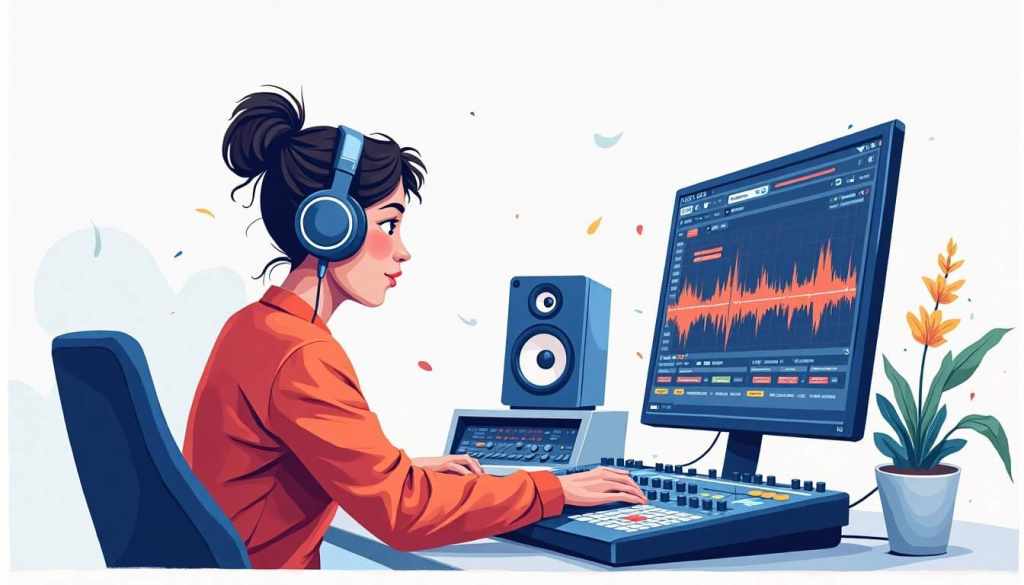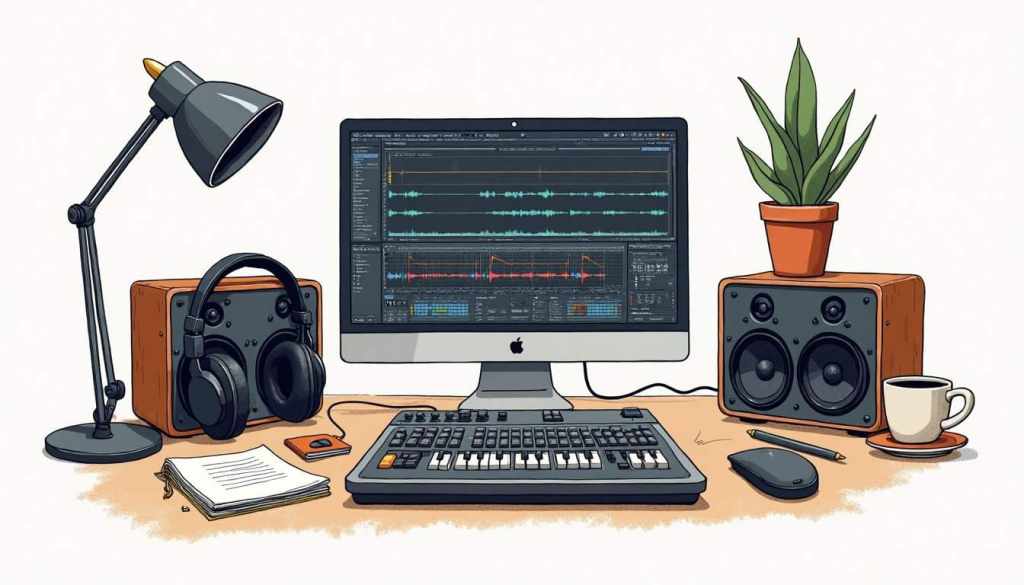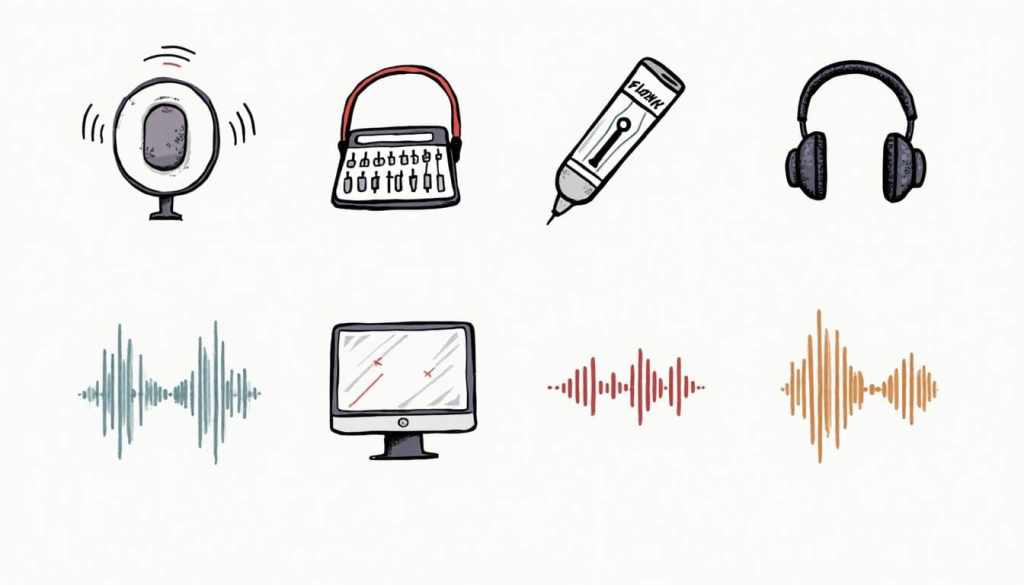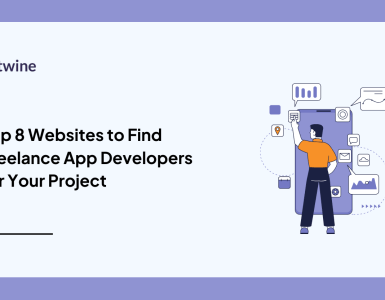Sound is half the story—often the half that makes your project feel real. Whether it’s a film, podcast, or game, a skilled sound editor brings clarity, emotion, and atmosphere to every scene. If you’re hiring a sound editor, start with a clear, compelling job description. This guide will help you write one that attracts the right talent.
Why sound editing matters in 2025
Streaming has obliterated geographical boundaries, surround-sound bars are cheaper than ever, and TikTok’s algorithm rewards snappy, polished audio. In short: audiences notice everything now. A single sync error or muddy dialogue track can sink your Rotten Tomatoes score faster than any plot hole.
Consumers care about quality
A Dolby survey found that 64% of viewers will abandon a show if dialogue is hard to understand—regardless of how gripping the visuals are. In gaming, the number is even higher: 71% of players say immersive audio directly affects purchase decisions.
Competition is fierce
More than 1,500 feature films premiered at festivals last year, and Spotify added 4.5 million new podcasts. That’s a lot of noise—literally. High-caliber sound editing is one of the quickest ways to cut through it.
What does a sound editor actually do?
In a nutshell, they curate, shape, and polish every sonic element you hear in a production. But the devil is in the detail, so let’s break it out.

Pre-production collaboration
A seasoned sound editor doesn’t wait until after the shoot. They’ll review scripts, flag audio-heavy scenes, and suggest on-set recording strategies. This proactive approach prevents ADR headaches later.
Post-production wizardry
Once the footage (or gameplay capture, or episode outline) lands in post, the sound editor:
- Organizes incoming tracks and metadata
- Syncs production audio to picture or timeline
- Cuts, trims, and layers sounds for continuity
- Designs bespoke effects when stock libraries fall short
- Balances levels and eliminates unwanted noise
- Prepares stems for the re-recording mixer
Collaboration with other departments
They liaise with composers to ensure the score hugs the dialogue, trade files with Foley teams, and check in with VFX for last-minute changes that could derail sync.
Core responsibilities
This section forms the backbone of your job description. Keep it concise but specific—vague bullet points attract vague candidates.
- Edit dialogue, ADR, Foley, ambience, and sound-effects tracks to broadcast standards (LUFS-aligned).
- Maintain an organized session workflow in Pro Tools (or DAW of choice) with color-coded regions and track naming conventions.
- Conform audio sessions to picture lock updates using EDL/AAF/OMF imports.
- Create temp mixes and sound design mock-ups for director review.
- Collaborate with music department to balance score against diegetic elements.
- Manage and back up large multichannel sessions to secure servers.
- Deliver final stems, M&E (music & effects) tracks, and print masters on schedule.
Must-have skills and qualifications
Skip generic asks like “team player” unless you can tie them to real studio scenarios.
Technical skills
At minimum, your sound editor should be fluent in:
- Pro Tools Ultimate (7.1 and Atmos workflows a plus)
- iZotope RX for restoration
- Wwise or FMOD (for interactive projects)
- Field recording gear—Zoom F8, Sennheiser MKH series, etc.
- Networked asset management (LucidLink, Avid NEXIS)
Soft skills
Because software doesn’t handle ego clashes:
- Crystal-clear communication with directors, producers, and fellow editors
- Deadline discipline—post schedules rarely slip in your favor
- Keen editorial judgment (knowing when “good enough” isn’t enough)
Qualifications & certifications
A film-school degree can be nice, but demo reels scream louder. Ask for:
- 2–5 years’ experience editing narrative, documentary, or AAA game audio
- IMDb credits or shipped game titles
- Avid Certified User or Operator credentials (optional but valued)
Desirable experience
If you’re working in specialized formats, list them here. You’ll filter faster.
- Spatial audio (Dolby Atmos, Ambisonics, or Apple Spatial)
- Podcast loudness delivery (-14 LUFS integrated)
- Multilingual dialogue versioning
- Live broadcast mixing for esports or awards shows
A day in the life of a sound editor
Use this snapshot in your job ad to help candidates picture their routine—people like knowing what they’re signing up for.

Morning: session prep
Check overnight dailies, align metadata, and set markers for problem spots.
Midday: creative editing
Layer ambience, drop in bespoke whooshes, or craft the perfect creature roar from pitched otter squeaks and slowed-down bulldozer engines.
Afternoon: reviews & revisions
Hop on Zoom with the director to preview a tense dialog scene, take notes, and implement changes before close of business. Back up everything twice.
How to write your job description
Follow the rule of three S’s: specific, succinct, scannable. Here’s the structure we recommend.
1. Project overview
One paragraph that answers “What are we making?” Example: “We’re producing an eight-episode cyber-thriller series for a major streaming platform.”
2. Role summary
Two to three lines explaining the editor’s purpose in plain English.
3. Key responsibilities
Use a bulleted list (see earlier section). Stick to five to eight items.
4. Required skills & experience
Group into Technical, Creative, and Soft-Skills buckets.
5. Nice-to-haves
Keep this short; otherwise, applicants treat them as must-haves and self-reject.
6. Logistics
Include location (remote/hybrid/on-site), contract length, compensation range, and application deadline.
7. Application instructions
Ask for a reel (never “just send anything”). Specify preferred file-sharing links and naming conventions.
Plug-and-play job description template
Copy, tweak, and post.
Title: Sound Editor (Contract) — [Project Name] Project: [Brief project description] Duration: [e.g., 12 weeks, full-time] Location: [On-site in LA / Remote / Hybrid] Role summary: We’re looking for a meticulous Sound Editor to shape the sonic landscape of our [film/game/podcast]. You’ll edit dialogue, craft sound design, and deliver broadcast-ready stems that elevate the story. Responsibilities: • Edit and organize dialogue, Foley, ambience, and SFX tracks • Sync audio to picture and conform sessions to updated cuts • Design bespoke sound effects when library assets fall short • Collaborate with composer and re-recording mixer to balance final mix • Deliver final stems, M&E, and print masters that meet platform specs Must-haves: • 3+ years’ experience in professional audio post-production • Proficiency with Pro Tools Ultimate and iZotope RX • Solid understanding of loudness standards (-24 LKFS, -14 LUFS) • Strong communication and file-management skills Nice-to-haves: • Dolby Atmos experience • ADR recording supervision • Unreal Engine audio pipelines Compensation: $40–$60/hour (DOE) To apply: Send your reel (link only, no attachments) and a brief note on your favorite project to jobs@[yourcompany].com by [date].
Interview questions to separate pros from pretenders
Use a mix of technical and situational prompts.
- Walk us through your signal chain when preparing dialogue for a 5.1 mix.
- How do you approach sound design when temp VFX placeholders change late in post?
- Name a project where you had to fix poorly recorded production audio. How did you salvage it?
- What’s your backup strategy for multi-terabyte sessions?
- Describe a time you disagreed with a director about a creative choice. How did you resolve it?

Key takeaways
- Sound editors bridge the gap between raw recordings and immersive storytelling.
- A clear, detailed job description filters unqualified applicants before your inbox explodes.
- Highlight responsibilities, technical requirements, and project context up front.
- Use targeted platforms to reach talent that already speaks your language (and your sample rate).
Ready to hire?
Twine connects you with battle-tested sound editors in minutes, not weeks. Post your brief, review curated portfolios, and lock in your hire before your next deadline sneaks up. Explore how Twine helps you hire faster—and give your story the sound it deserves.



